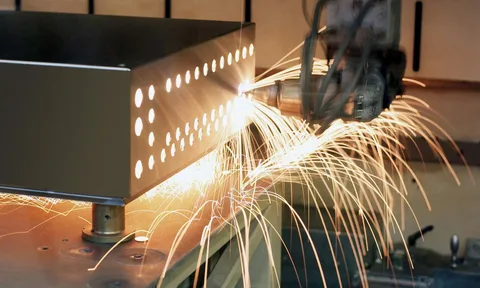Bowling, a sport with roots dating back thousands of years, has evolved significantly in terms of equipment design. Today, modern bowling gear is the result of continuous advancements in technology, materials science, and engineering. From the shape of the ball to the design of the shoes and accessories, each piece of equipment is meticulously crafted to enhance performance. Understanding the science behind these designs can help players make informed decisions about the gear they use.
The Role of Materials Science in Bowling Equipment
One of the most crucial elements in modern bowling equipment design is the use of advanced materials. Bowling balls, for example, are made from a variety of coverstocks and inner cores, each influencing the ball’s motion on the lane. The coverstock, typically made from urethane, reactive resin, or plastic, determines the ball’s grip on the lane surface. The choice of material affects how much friction the ball generates, which in turn impacts its ability to hook, skid, and roll.
Inside the bowling ball, the core plays a significant role in shaping its dynamics. The core’s weight distribution and shape affect how the ball spins and how its mass moves as it travels down the lane. Manufacturers use precise calculations to design cores that produce the ideal motion for different bowling styles. These cores are often asymmetrical, which allows for greater control over the ball’s trajectory.
For instance, the mass of a core is designed to be positioned in a way that increases the ball’s ability to hook, a critical element for competitive players. The density of the core material, whether it be a high-density urethane or a lighter-weight filler, contributes to the overall performance of the ball, allowing players to tailor their equipment for specific lane conditions.
When looking for new bowling equipment, it’s essential to understand how these materials affect performance. Some players opt for more aggressive materials, while others prefer a smoother finish for less hook and greater control. This variability allows for a wide range of equipment tailored to different playing styles and lane conditions.
How Modern Bowling Shoes Enhance Performance
Bowling shoes are another area where scientific advancements have made a significant impact. The design of modern bowling shoes is based on the need for comfort, stability, and controlled movement. The soles of bowling shoes are particularly important, as they are engineered to provide the right amount of slide and traction on the approach.
Bowling shoes generally have two types of soles: one for sliding and the other for braking. The sliding sole allows the player to smoothly glide as they release the ball, while the braking sole provides the necessary friction to stop the player’s movement at the end of the approach. These soles are made from specialized materials such as rubber, leather, or synthetic compounds, and the type of material used depends on the lane surface and the player’s preference.
In addition to the soles, modern bowling shoes are designed for superior comfort and support. Padded insoles, breathable uppers, and adjustable straps ensure that the shoes provide long-lasting comfort, especially for players who bowl for extended periods. The structure of the shoe helps prevent injuries by providing proper arch support and alignment.
The Impact of Aerodynamics on Bowling Balls
The aerodynamic design of bowling balls also plays a role in modern performance. As the ball travels down the lane, the way it interacts with the air can influence its speed and trajectory. Bowling ball manufacturers take aerodynamics into account when designing the ball’s surface texture and shape.
For example, the dimples or texture added to the surface of the ball help reduce air resistance, allowing the ball to maintain its speed and stability over longer distances. The placement and depth of these dimples are carefully calculated to balance the ball’s motion and ensure a consistent path toward the pins. The design also accounts for factors like wind resistance and the transition between oil patterns on the lane, which can affect how the ball travels.
The combination of aerodynamics and materials science ensures that the ball maintains a consistent and predictable movement, giving players greater control over their shots. This scientific approach to design has allowed for the development of bowling balls that are more responsive to the bowler’s input while offering increased performance across varying lane conditions.
Customization and Precision Engineering
Precision engineering has also become an essential component of modern bowling equipment design. Customization options, particularly for bowling balls, allow players to have their equipment tailored to their specific needs. Custom drilling of the finger holes is one example of how bowling equipment manufacturers apply precision engineering to improve performance. The size, shape, and placement of the holes are customized to fit the bowler’s hand perfectly, promoting a more comfortable grip and reducing the risk of injury.
Advanced technology like 3D scanning and computer-aided design (CAD) allows manufacturers to create equipment that fits each bowler’s unique specifications. Players can now choose from a variety of options, such as ball weights, coverstock materials, and core configurations, ensuring that their equipment is optimized for their personal style of play.
The customization of bowling shoes has also become more popular, with many manufacturers offering options for different arch types and foot shapes. The ability to adjust the fit and performance of your equipment gives you a competitive edge, as it allows you to play with gear that is fine-tuned for your unique needs.
Conclusion
Modern bowling equipment is a result of a thoughtful and scientifically driven design process. From the materials used in the construction of the ball to the engineering of the shoe soles, every detail is carefully considered to improve performance, comfort, and safety. With the ability to customize equipment for specific needs and the advancements in materials science and engineering, players today have access to tools that can significantly enhance their game.
When selecting bowling equipment, it is essential to consider factors such as the ball’s core design, the shoe’s functionality, and the aerodynamics involved in the ball’s movement. By understanding the science behind these innovations, bowlers can make more informed decisions about the equipment they choose to invest in. Reliable bowling equipment manufacturers are continuously improving their designs to provide top-quality gear that caters to a wide range of players, from beginners to professionals.



